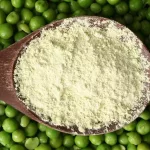
What’s Messing With Your Nerves?
Let me guess… you’re fed up with those tingly hands, feet that feel like they’re on fire, or that mysterious numbness that seems to show up right as you’re trying to get comfy? You’re not alone. Most people don’t realize that nerve pain—a.k.a. peripheral neuropathy—hits a lot of us. Sometimes it sneaks in after an old injury, sometimes it tags along with diabetes, or, honestly, just from too much stress. It’s like your body’s alarm system got a little too sensitive and now won’t stop blaring.
I’ve been there, too. After a tough year (don’t ask, stress city), my feet felt prickly 24/7. It was weird and honestly kind of scary. That’s what set me off on this mission to find actual, doable solutions you can try at home… and yes, I wanted ones that weren’t all prescription pads and medical jargon. Turns out, natural remedies for nerve repair using apple cider vinager, tumerick and japanese ingredient are legit options for calming down frazzled nerves, supporting healing, and (dare I say?) getting your life back on track.
Apple Cider Vinegar: Not Just for Salad
Could ACV Calm Nerves?
Let’s get right into it: why is everyone talking about apple cider vinegar (ACV) for nerve pain? You might think it’s just an old wives’ tale, but there’s stuff in apple cider vinegar—like magnesium, potassium, and strong anti-inflammatory compounds—that researchers believe can actually help reduce the kind of chronic inflammation that damages nerves in the first place. Plus, there’s evidence that ACV can help balance blood sugar levels, which is a biggie for those of us dealing with neuropathy from diabetes.
And here’s a thing I wish someone had told me sooner: it’s not just about drinking it (though lots of folks do). People swear by soaking their feet in diluted apple cider vinegar to ease burning, tingling, and restlessness. No magic cures here… just maybe a gentler way to take the edge off—especially before bed.
How to Use It, For Real
- Add one to two tablespoons of ACV to a glass of water, sip slowly (yep, it’s sour—mix with honey if you must).
- Try a foot soak: Add a cup of apple cider vinegar to a small tub of warm water, dip those tired feet for 15 minutes.
- Keep this up a few times a week. Your feet (and maybe your mood) will thank you.
I wrote a cheat sheet on all the ways you can try this at home—seriously, if you need step-by-steps, How to take apple cider vinegar for nerve pain is worth a peek. It goes into more than I can, right here.
Side note: My aunt started these soaks after her diabetes diagnosis. She texted me last week—”I’m finally sleeping again. My feet aren’t screaming at night!”
Turmeric: Golden Spice, Golden Nerves
Does Turmeric Heal Nerve Pain?
Now for my hands-down favorite: turmeric. This bright yellow spice—known in every curry I grew up eating—packs some serious healing power. The magic comes from curcumin, a natural compound with a reputation for tackling inflammation, protecting tissues (yes, including nerves), and even acting as a low-key pain reliever.
According to research on how turmeric and curcumin work on pain, curcumin not only calms joint and muscle aches, but it also eyes up neuropathic pain (that’s nerve pain!). There are even studies showing it might help nerves regenerate—which, if you ask me, is kind of wild. Who knew your spice drawer had this much power?
Let’s not gloss over this: if you deal with stinging, burning, pins-and-needles feelings, or even just dull aches thanks to nerve issues, turmeric might help soften all that. It won’t work overnight, but honestly, what does?
How To Add More Turmeric (Without Turning Everything Yellow)
- Add powdered turmeric to soups, stews, or smoothies. (Just add black pepper—it helps you absorb more curcumin!)
- Golden milk at night. Warm milk (or oat milk), a half teaspoon of turmeric, a dash of cinnamon, pinch of black pepper. Cozy. Calming.
- For something a little different, try making your own turmeric and apple cider vinegar tonic—more on that below…
Honestly, I couldn’t resist: if you need recipes, I put together a Turmeric and apple cider vinegar recipe roundup that’s beginner-friendly and, yes, actually tastes good.
Quick story: I convinced my neighbor (she’s a nurse!) to try turmeric tea when her hands went numb after a carpal tunnel flare-up. She texted a week later: “Still tingly, but WAY less burning. Guess you were right, spice queen.”
The Japanese Ingredient You’d Never Guess
Why Is Matcha in This List?
Alright, let’s take a little detour to Japan. Ever heard of matcha? Sure you have—it’s that vibrant green powder that’s showing up in every latte and smoothie bowl. But matcha is way more than Instagram hype. It’s loaded with antioxidants called catechins (like EGCG—easy to say, right?), and science says these can calm inflammation, protect nerve cells, and even help your circulatory system do its thing.
Studies (like this big roundup on medicinal herbs for nerve pain) highlight green tea’s ability to reduce oxidative stress—think of it like rust-proofing for your nerves. It’s not as famous as turmeric, but it quietly helps your nerves handle everything from injury to stress and even aging.
Ways To Welcome Matcha (That Aren’t Just Tea)
- Classic: whisk a half teaspoon of matcha into hot water, sip solo or add oat milk for a creamy latte.
- Add a sprinkle to smoothies or yogurt bowls for a little “zen” punch.
- Try a shot: matcha, touch of turmeric, splash of apple cider vinegar, little honey. Warning: this is not your average energy drink.
My Tokyo-born hiking buddy swears by matcha lattes after his grueling 10K runs. He says it “wakes up his feet” and keeps muscle soreness—and those weird aches—away. I tried it… and yeah, I’ll admit, I felt focused and solid for hours.
Layering Up: Ginger, Capsaicin, and Food Tricks
Old Remedies, Fresh Take
Let’s not forget a few more everyday healers. Ginger—yes, the root rolling around your fridge’s veggie drawer—is another big hitter. Like turmeric, ginger brings major anti-inflammatory power to the table. It’s perfect for those days when your feet are extra cranky.
But wait, don’t toss out your hot peppers. Capsaicin (the stuff that makes chilis spicy) is widely used in creams for nerve pain—especially for smaller areas like your hands or that pesky foot arch tingle. It blocks certain pain signals, at least for a while. Rubbing it in may sting at first, but a lot of people rave about the cooling relief that sets in after.
Table: Quick-Start Guide for Nerve-Calming Foods
| Ingredient | How It Helps | Best Ways to Use |
|---|---|---|
| Apple Cider Vinegar | Reduces inflammation, balances blood sugar | Drink, foot soak |
| Turmeric | Calms inflammation, supports nerve repair | Curry, golden milk, supplements |
| Matcha | Protects nerves, antioxidants boost | Tea, smoothie, energy shot |
| Ginger | Reduces pain, eases digestion (which affects nerves) | Tea, stir-fry, juice |
| Capsaicin | Interrupts pain signals | Cream, ointment |
Beyond Remedies: Mind, Movement, and Meals
Eat Bright, Move More, Breathe Easy
Here’s the catch with nerves: they’re complicated. And sometimes, a sprinkle of turmeric or a shot of ACV isn’t enough by itself. You need to back it all up with a solid anti-inflammatory diet (think veggies, fish, whole grains…), gentle movement (simple walks count!), and, dare I say, a better sleep schedule.
Every expert, from neurologists to nutritionists, echoes the same thing—lowering chronic inflammation helps every cell, including the nerves, work better. Consider adding more colorful veggies, omega-3 fats (like walnuts, chia seeds, and salmon), and cut down on processed foods as much as you can. Picture your nerves like an overworked power line… they need good fuel and less “junk” clogging things up. Even a warm bath or gentle yoga can give your frayed nervous system a chance to regroup.
The Power of Little Tweaks
I had awful pins-and-needles in my legs last winter. All I did was start a nightly turmeric tea, switch lunch to a big rainbow salad, and, okay, I remembered to stretch before bed. It sounds almost silly, but my pain was cut in half after a few weeks. (My doctor, happily, was not surprised.)
Curious about combining some of these? The Turmeric and apple cider vinegar recipe is a good place to start. It’s easy, makes me feel like I’m doing something nice for myself, and—bonus—I like the flavor, oddly enough.
Let’s Talk Supplements (And A Few Cautions)
Don’t Go It Alone
The best thing about natural remedies for nerve repair using apple cider vinager, tumerick and japanese ingredient is… well, they’re pretty gentle on most people. But “natural” doesn’t mean you can throw caution out the window. If you’re on medications, have a health condition, or just want to double-check you’re not making things worse, check in with your doc first. (I always do, even when I’m just adding a new vitamin.)
If you suspect you’re low on B12, check those levels—B vitamins are huge for healthy nerves, and restoring them can even reverse certain symptoms. But take it slow. With supplements, more isn’t always better.
Looking for more uses or nervous about dosage? Seriously, the step-by-step at How to take apple cider vinegar for nerve pain is a goldmine. I referenced it the first time I bought that cloudy ACV at the store—it saved me from a big, very sour mistake!
So, Where Does That Leave You?
Right here, probably feeling a mix of hope… and confusion. Feel that? It’s normal. Nerve pain is exhausting and honestly more maddening than most people realize. But here’s the good news: you’ve got options—real, practical, inviting options.
Natural remedies for nerve repair using apple cider vinager, tumerick and japanese ingredient are rooted in solid science and in the little victories of everyday people, just like us. Pick an idea—maybe start with a turmeric drink, a comfy ACV foot soak, or a matcha latte for a mid-afternoon pick-me-up. Each small change builds into something bigger: less pain, more comfort, a better night’s sleep.
Don’t expect overnight miracles, but do expect progress—sometimes subtle, sometimes obvious. Keep experimenting, be kind to yourself, and know that you’re in good company. If you find a combo that works for you, let someone else know!
Your nerves might be frazzled now, but your future self is going to thank you for giving these simple, natural remedies a shot. Hey, and if you try that Turmeric and apple cider vinegar recipe and love it? Message me. I’m always looking for taste-test buddies. Here’s to feeling more like you again—one healing step (or sip) at a time.


















Leave a Reply
You must be logged in to post a comment.